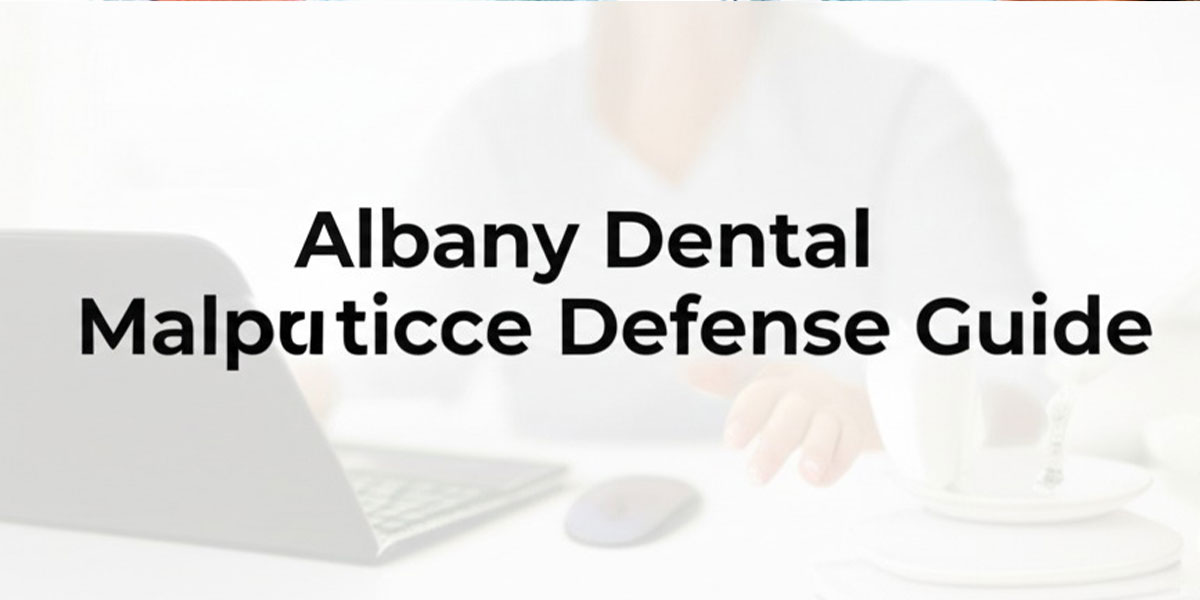Protecting Your Dental Practice in Albany from Malpractice Claims
As a respected dentist practicing in Albany, New York, you have dedicated your professional life to delivering top-notch patient care, establishing a reputable practice, and achieving success. The demand for high-quality dental services in the region is significant,and your commitment to excellence serves as the cornerstone of your business. Though,even the most skilled and diligent practitioners are not immune to the risk of facing a dental malpractice lawsuit. In today’s litigious society, a single claim – whether valid or not – can put your license at risk, damage your reputation, and lead to notable financial and emotional strain.Understanding the legal landscape surrounding dental malpractice in New York is crucial not only for professional duty but also as an integral part of a complete risk management strategy aimed at safeguarding your life’s work.
With over 30 years of experience as an attorney in New York, I have witnessed how legal issues can unexpectedly disrupt thriving businesses. While my primary focus has been on asset protection through estate planning and business succession planning, the principles of risk mitigation apply universally. A malpractice claim poses a direct threat to the value and sustainability of your dental practice as a fundamental asset. Therefore, implementing a proactive defense strategy is imperative. This guide aims to offer Albany dentists an extensive overview of New York’s laws on dental malpractice – outlining key elements that plaintiffs must establish and emphasizing strict statutes of limitations. Furthermore, it provides practical advice on documentation practices, effective patient communication strategies, and informed consent procedures designed to fortify your practice against potential claims.
Understanding Dental Malpractice Laws in New York
A dental malpractice lawsuit constitutes a specific type of negligence claim that requires plaintiffs to prove four distinct elements by preponderance of evidence for their case to succeed – commonly known as the “Four D’s” of negligence. Familiarizing yourself with these legal foundations is essential for developing an effective defense strategy that aligns with established protocols within your practice while countering potential arguments from plaintiff attorneys effectively.
The entire process operates within a framework defined by statutes and case law that delineate healthcare providers’ responsibilities. Compliance with these standards is non-negotiable for any dental office operating in Albany. Upholding these standards forms the basis upon which patient trust is built while ensuring legal defensibility against allegations regarding breaches in standard care – underscoring why every team member from receptionists to clinicians must grasp their obligations thoroughly.
Key Elements Required for Dental Malpractice Claims
- Duty: plaintiffs must demonstrate the existence of a dentist-patient relationship where you owed them professional care based on appointment records or treatment plans.
- Dereliction (or Breach) Of Duty: plaintiffs need evidence showing failure to meet accepted standards defined by skill levels expected from prudent dentists under similar circumstances.
- direct Causation (or Proximate Cause): plaintiffs must establish direct links between breach instances leading directly to injuries suffered by patients.
- Damages: Proof demonstrating actual harm or losses incurred due to injuries sustained forms this element essential for prosperous claims.
Statute Of Limitations For Dental malpractice Cases In New York
An critically important aspect influencing defense strategies involves understanding statutes limiting timeframes within which patients can file lawsuits related…
Enhancing Risk management in Dental Practice
When running a dental practice, it is indeed crucial to prioritize risk management strategies to protect both your patients and your business. By implementing certain protocols and procedures, you can minimize the likelihood of malpractice claims and ensure that you are prepared to handle any legal challenges that may arise.
Thorough Documentation Practices
One of the most critically important aspects of risk management in dentistry is maintaining detailed records of all patient interactions. This includes documenting phone calls, emails, and in-person conversations regarding treatment plans, post-operative care, missed appointments, or any complaints raised by patients. By keeping thorough records,you create a strong defense against allegations of negligence should they arise.
In many ways,the meticulous documentation required in dental practice mirrors the record-keeping standards seen in probate court proceedings. Just as a probate attorney relies on detailed documentation to execute an estate plan effectively, a dentist can rely on their records to demonstrate the quality of care provided to patients.
The Importance of Informed Consent
Informed consent is not just a legal requirement but also a critical risk management tool for dental practitioners. While obtaining a signed consent form is necesary before any procedure, the true value lies in engaging patients in meaningful discussions about potential risks, benefits, and alternatives to treatment.This dialog should be documented thoroughly in each patient’s chart to ensure clarity and understanding.
By ensuring that patients are fully informed about potential complications or outcomes before proceeding with treatment, dentists can build trust with their patients and manage expectations effectively. This level of clarity is essential for elective procedures with high patient expectations like advanced orthodontic treatments such as Invisalign.
Structuring Your Practice for Asset Protection
Beyond clinical considerations, dentists must also pay attention to the legal structure of their practices for enhanced asset protection. Establishing the right legal entity for your practice can help shield personal assets from business liabilities and debts. In new York State, dentists typically opt for Professional Service Corporations (P.C.) or Professional Service Limited Liability Companies (P.L.L.C.) due to their protective benefits.
While these structures offer some protection from malpractice claims related to partners or employees within the practice itself, individual practitioners remain personally liable for their own professional negligence. To ensure comprehensive asset protection against malpractice claims requires a multi-layered approach involving both appropriate corporate structures and adequate malpractice insurance coverage.
The Role of Malpractice Insurance
- Adequate Coverage: It’s essential not only have professional liability insurance but also have sufficient coverage tailored specifically for your practice’s needs.
- Type Of Policies:
- Occurrence Policies:This type covers incidents occurring during policy period nonetheless when claim filed.
- Claimes-Made Policies:This type covers only claims made while policy active; tail coverage needed if switching carriers.
To determine appropriate coverage limits based on scope & complexity cosmetic dentist albany performing complex reconstructions may require higher limits than general practitioner; regular review advised by broker & advisor.
In case claim arises contact insurer promptly avoid direct communication w/ plaintiff’s attorney; maintain integrity & accuracy patient records throughout litigation process w/ guidance from experienced defense attorney.
Effective communication w/ dissatisfied patients key de-escalating conflicts preventing lawsuits; empathetic listening investigation resolution vital maintaining positive patient relationships safeguarding reputation dental office Albany protecting financial interests.
In conclusion prioritizing risk management strategies informed consent thorough documentation proper business structuring adequate insurance key elements protecting dental practice mitigating potential legal challenges ensuring long-term success.”Protecting Your Practice: A Comprehensive Guide to Managing Legal Risks
In today’s fast-paced world, healthcare professionals face a myriad of legal challenges, from malpractice claims to probate proceedings. It is crucial for practitioners to prioritize risk management strategies to safeguard their practices and reputations. This guide offers valuable insights into navigating the complex legal landscape and protecting your practice from potential liabilities.
Connecting with Patients: A Key Risk management Strategy
One of the most effective ways to mitigate legal risks in your practice is by establishing strong connections with your patients. By fostering open communication and building trust, healthcare providers can prevent misunderstandings and potential disputes. Taking the time to listen to patients’ concerns and address them promptly can go a long way in preventing legal issues down the line.
Consulting with Experienced attorneys: A Wise Investment
For a comprehensive assessment of your practice’s legal health, it is advisable to seek guidance from experienced attorneys. These professionals can offer invaluable insights into potential risks and provide guidance on how to mitigate them effectively. Whether you are facing malpractice allegations or navigating probate proceedings, consulting with legal experts can definitely help you make informed decisions that protect your interests.
Local support for florida Practitioners
In Florida, healthcare providers can benefit from partnering with local law firms that specialize in medical malpractice defense and probate law. By seeking assistance from attorneys who understand the intricacies of state laws and regulations, practitioners can ensure they are well-equipped to handle any legal challenges that may arise. Contacting a reputable local firm is a prudent choice for Florida practitioners looking to protect their practices.
Conclusion
Managing legal risks is an essential aspect of running a successful healthcare practice. By prioritizing patient communication, seeking guidance from experienced attorneys, and partnering with local law firms, practitioners can effectively safeguard their practices against potential liabilities. investing in proactive risk management strategies is key to ensuring long-term success in today’s competitive healthcare environment.
the post Protecting Your Practice: A Comprehensive guide appeared first on Lawyer.Bet – Your Trusted Legal Resource.




